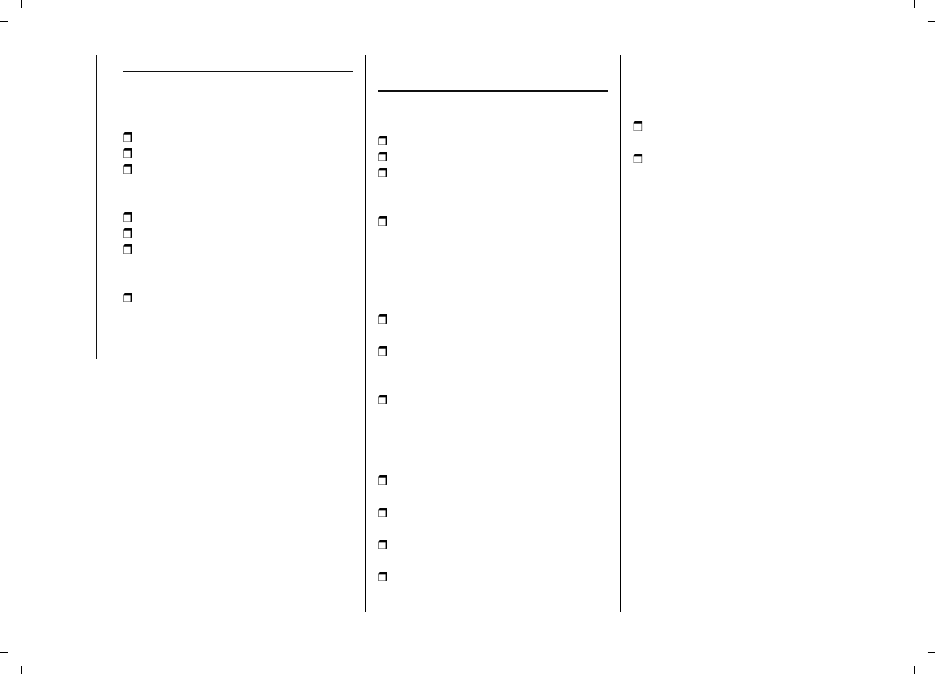Fiat Doblo Panorama (2019 year). Manual - part 10

SERVICING AND MAINTENANCE
154
REGULAR CHECKS
Every 1,000 km or before long
journeys, check and, if necessary, top
up:
engine coolant level;
brake fluid level;
check and top up AdBlue (UREA)
diesel emissions additive level;
(for versions/markets, where provided);
windscreen washer fluid level;
tyre inflation pressure and condition;
operation of lighting system
(headlights, direction indicators, hazard
warning lights, etc.);
operation of screen washer/wiper
system and positioning/wear of
windscreen/rear screen wiper blades
(for versions/markets where provided);
Every 3,000 km check and top up if
required: engine oil level.
DEMANDING
VEHICLE USE
If the vehicle is mostly used in one of
the following conditions:
towing a trailer or caravan;
dusty roads;
short, repeated journeys (less
than 7-8 Km) at sub-zero outdoor
temperatures;
engine often idling or driving long
distances at low speeds or long
periods of inactivity;
the following checks must be carried
out more often than indicated in the
Scheduled Servicing Plan:
check front disc brake pad condition
and wear;
check cleanliness of bonnet
and luggage compartment locks,
cleanliness and lubrication of linkage;
visually inspect conditions of:
engine, gearbox, transmission,
pipes and hoses (exhaust/fuel
system/brakes) and rubber elements
(gaiters/sleeves/bushes, etc.);
check battery charge and battery
fluid level (electrolyte);
visually inspect conditions of the
accessory drive belts;
check and, if necessary, change
engine oil and replace oil filter;
restore additive level for AdBlue
Diesel emissions (UREA) (for
versions/markets, where applicable),
when the warning light comes on or
the message on the instrument panel
appears;
check and, if necessary, replace
pollen filter;
replacement of air cleaner cartridge
every 15,000 km.